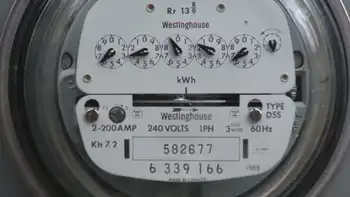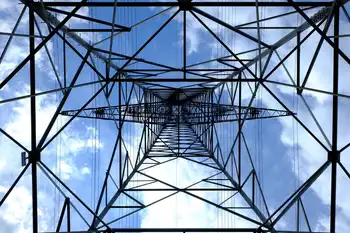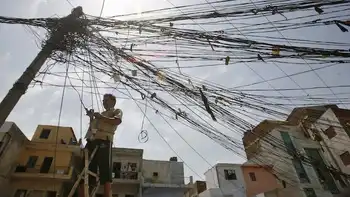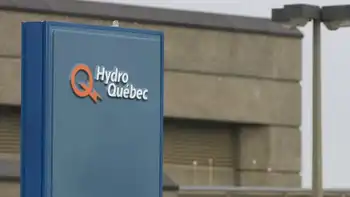As demand for power sputters, bills may fall
By Associated Press
Protective Relay Training - Basic
Our customized live online or in‑person group training can be delivered to your staff at your location.

- Live Online
- 12 hours Instructor-led
- Group Training Available
Prices on wholesale markets are expected to decline for the rest of 2009, according to the Energy Information Agency. While rates will probably begin edging up again in 2010, it will likely be less than half the 6.2 percent jump recorded last year.
For decades as Americans bought more electronics, more appliances, air conditioners and other gizmos, energy demand has only moved in one direction and prices have followed suit.
The decline in power usage over the past year is a rarity and also an indication of how badly the recession has jolted the economy and changed the way Americans spend.
The shift began last year, when power consumption fell 1.6 percent. Government forecasters see consumption falling another 2.7 percent this year. That would mark the first time since 1949 that the nation has seen energy demand fall in consecutive years.
Given the broad apprehension over the economy, any money consumers can keep in their pockets may help.
"You might see a decrease in your bill or, at the very least, less of an increase. And these days that's not bad," said Charlie Acquard, executive director of the National Association of State Utility Consumer Advocates.
You can trace the shift from major industrial power users all the way back to individual consumers to see what has happened.
The number of unemployed Americans is nearing 15 million and prospects for the job market remain gloomy. Retailers just reported their 12th straight month of declining sales and many people are buying only what they must.
Power consumption by the industrial and manufacturing companies that make everything from cars to cotton swabs has fallen faster than anywhere else — 10 percent this year by government estimates. Industrial consumption fell about 20 percent in parts of the Midwest, Carolinas and the South during the second quarter, utilities say.
This pullback by some of the biggest energy users in the U.S. may provide a silver lining for millions of people and businesses in the form of declining or flattening utility bills.
The recession has suppressed demand for coal, natural gas and oil. This has sent a ripple through wholesale electric markets, where fossil fuels are turned into energy.
In the PJM wholesale market that coordinates prices in all or parts of 13 states in the eastern half of the country, prices are down about 40 percent from a year ago.
The weather is helping as well. After a very mild summer in which it made more sense to open the windows of your home rather than crank up the air conditioning, most meteorologists see a relatively warm winter on the way.
How much of a break you get in your bill, if any, and for how long comes down to where you live.
If you reside in the Northeast, West or in a central state like Texas where rates are based on spot prices, you stand a good chance of getting some relief.
Customers in more regulated markets or in spots where utilities calculate bills based on long-term contracts will not benefit so much. In those markets, rates tend to be more stable.
In Texas, about 250,000 of the 2.2 million customers of TXU Energy saw monthly rates fall 15 percent in August. In the Washington, D.C. area, prices for Pepco's 750,000 customers are up this summer.
The difference is that TXU buys power based off spot natural gas prices, down about 80 percent in the past year; Pepco buys power on wholesale markets with a three-year time horizon that is designed to eliminate roller-coaster like swings in prices.
"Nobody wants that when you're budgeting energy for home or business," Pepco spokesman Clay Anderson said.
He expects prices to begin dropping gradually.
If you are getting a break from your power provider already, enjoy it while you can. There are many factors that affect your bill and most of them tend to drive it higher.
A rebounding economy will certainly give energy prices a boost.
What's more, the U.S. power infrastructure is aging and new plants and transmission lines must be built or replaced. That is going to cost businesses and consumers in the years ahead.
The big wild card is the legislation pending in Congress that may require utilities to cut emissions of carbon dioxide to address global warming. Utilities, especially those that rely on coal, will spend tens of billions of dollars to come up with ways to remove carbon dioxide from emissions.
They are going to want to recoup some of those costs. Customers will feel it in their wallets when they do.











